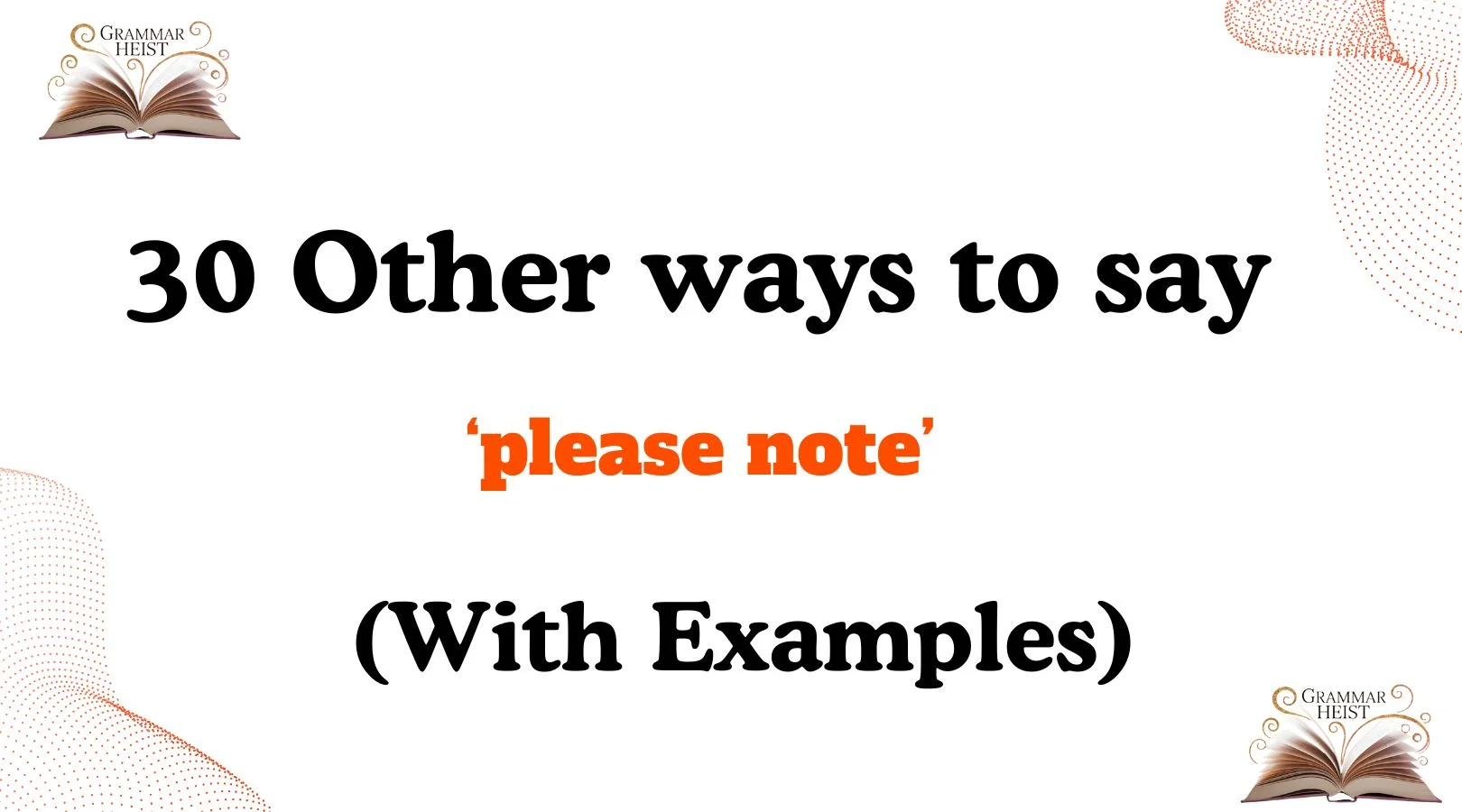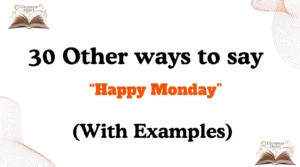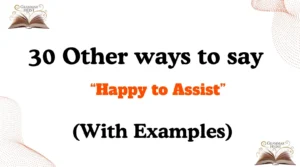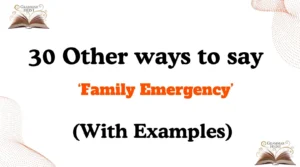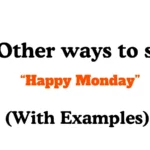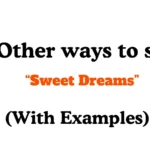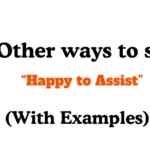Finding the right words to communicate professionally can make a world of difference. A simple phrase like “please note” can sometimes feel formal or distant. Using thoughtful alternatives allows you to convey information clearly while showing care, respect, and attentiveness. Whether in emails, reports, or presentations, these alternatives can make your message feel more personal and meaningful.
What Does “please note” Mean?
The phrase “please note professionally” is used to politely draw someone’s attention to information, instructions, or updates. It is a formal way to ensure that the recipient is aware of something important without sounding demanding.
Is It Professional/Polite to Say “please note”?
Yes, it is professional and polite when used in appropriate contexts. However, overusing it may come across as overly formal or mechanical. Using alternatives can help vary your tone and make communication warmer and more engaging.
Pros and Cons
Pros:
- Clear and concise
- Formal and professional
- Directly highlights important information
Cons:
- Can feel impersonal
- May sound repetitive if overused
- Might seem too formal in casual or team-based communication
Synonyms For please note
- Kindly be advised
- Please be aware
- I would like to bring to your attention
- Please take note
- Allow me to point out
- Please take into consideration
- I would like to highlight
- For your awareness
- Please consider
- I wish to inform you
- It is important to note
- Please observe
- May I draw your attention to
- Let me bring to your notice
- I would like to emphasize
- Please pay attention to
- Take note that
- I would like to bring your focus to
- Please take heed
- I want to make you aware
- Be advised that
- Please give attention to
- I wish to draw your attention
- Just to inform you
- I’d like to bring to your attention
- Please acknowledge
- Take into account
- Please remember
- I’d like to make you aware
- Please be informed
1. Kindly be advised
Scenario: Informing a colleague about an updated policy.
Examples:
- Kindly be advised that the meeting has been rescheduled to 3 PM.
- Kindly be advised of the new procedures for submitting reports.
- Kindly be advised that the office will remain closed next Friday.
Tone: Polite, formal, and considerate.
Explanation: Softens the message while maintaining professionalism, suitable for emails or notices.
2. Please be aware
Scenario: Highlighting critical information in a project update.
Examples:
- Please be aware that the deadline for submissions is tomorrow.
- Please be aware of the potential delays due to system maintenance.
- Please be aware that client feedback is expected by Friday.
Tone: Neutral and professional.
Explanation: Emphasizes awareness without demanding attention aggressively.
3. I would like to bring to your attention
Scenario: Pointing out important data in a report.
Examples:
- I would like to bring to your attention the recent changes in budget allocation.
- I would like to bring to your attention that the shipment is delayed.
- I would like to bring to your attention the client’s specific request.
Tone: Polite and formal, with focus on respect.
Explanation: Draws attention carefully, showing respect for the reader’s time and focus.
4. Please take note
Scenario: Notifying staff about procedural updates.
Examples:
- Please take note of the updated dress code policy.
- Please take note of the new meeting schedule.
- Please take note that the training session is mandatory.
Tone: Direct, polite, and professional.
Explanation: Maintains clarity while signaling importance.
5. Allow me to point out
Scenario: Highlighting a crucial point in a discussion.
Examples:
- Allow me to point out the discrepancy in the figures.
- Allow me to point out the key benefits of this approach.
- Allow me to point out that additional approvals are required.
Tone: Respectful and attentive.
Explanation: Polite, showing willingness to guide rather than command.
6. Please take into consideration
Scenario: Requesting attention to factors in decision-making.
Examples:
- Please take into consideration the upcoming holiday schedule.
- Please take into consideration the client’s preferences.
- Please take into consideration the budget constraints.
Tone: Thoughtful and advisory.
Explanation: Encourages reflection without sounding forceful.
7. I would like to highlight
Scenario: Emphasizing a key achievement or issue.
Examples:
- I would like to highlight the success of last quarter’s campaign.
- I would like to highlight the challenges in project implementation.
- I would like to highlight the critical feedback from the client.
Tone: Professional and focused.
Explanation: Draws attention strategically and respectfully.
8. For your awareness
Scenario: Sharing updates with team members.
Examples:
- For your awareness, the IT system will be updated tonight.
- For your awareness, the client has requested additional documentation.
- For your awareness, the office will host a fire drill tomorrow.
Tone: Neutral, informative.
Explanation: Casual yet professional, suitable for internal communication.
9. Please consider
Scenario: Asking someone to review an option or proposal.
Examples:
- Please consider the attached proposal before our meeting.
- Please consider the alternative solution provided.
- Please consider the potential risks highlighted in the report.
Tone: Respectful and polite.
Explanation: Softens requests while maintaining authority.
10. I wish to inform you
Scenario: Providing official notifications or updates.
Examples:
- I wish to inform you that your leave request has been approved.
- I wish to inform you about the upcoming system maintenance.
- I wish to inform you that the client meeting is postponed.
Tone: Formal and courteous.
Explanation: Suitable for official correspondence, maintaining professionalism.
11. It is important to note
Scenario: Drawing attention to critical details.
Examples:
- It is important to note that the figures are preliminary.
- It is important to note that deadlines are non-negotiable.
- It is important to note that participation is mandatory.
Tone: Serious and professional.
Explanation: Highlights significance while remaining neutral.
12. Please observe
Scenario: Requesting attention to specific instructions.
Examples:
- Please observe the guidelines for document formatting.
- Please observe the safety protocols during the event.
- Please observe the new workflow in daily operations.
Tone: Directive but polite.
Explanation: Communicates rules or expectations clearly.
13. May I draw your attention to
Scenario: Highlighting a concern or critical point.
Examples:
- May I draw your attention to the missing attachments?
- May I draw your attention to the client’s latest feedback?
- May I draw your attention to the upcoming audit schedule?
Tone: Polite, formal, and attentive.
Explanation: Shows respect while gently guiding focus.
14. Let me bring to your notice
Scenario: Sharing important updates.
Examples:
- Let me bring to your notice that the invoice is pending.
- Let me bring to your notice the revised project deadlines.
- Let me bring to your notice the new regulations.
Tone: Informative and courteous.
Explanation: Maintains professionalism while highlighting key points.
15. I would like to emphasize
Scenario: Stressing a particular point or deadline.
Examples:
- I would like to emphasize the importance of timely submissions.
- I would like to emphasize that safety measures must be followed.
- I would like to emphasize that client satisfaction is our priority.
Tone: Formal and assertive yet polite.
Explanation: Highlights importance respectfully without being aggressive.
16. Please pay attention to
Scenario: Drawing focus to crucial instructions.
Examples:
- Please pay attention to the updated login procedure.
- Please pay attention to the meeting agenda.
- Please pay attention to the budget limitations.
Tone: Polite but direct.
Explanation: Useful in training or operational contexts.
17. Take note that
Scenario: Making announcements or reminders.
Examples:
- Take note that the office will be closed on Friday.
- Take note that submissions are due by 5 PM today.
- Take note that new guidelines are in effect immediately.
Tone: Direct and professional.
Explanation: Slightly more authoritative, yet polite in professional contexts.
18. I would like to bring your focus to
Scenario: Emphasizing key areas of concern.
Examples:
- I would like to bring your focus to the rising costs.
- I would like to bring your focus to client satisfaction metrics.
- I would like to bring your focus to urgent action items.
Tone: Attentive and respectful.
Explanation: Encourages careful consideration without sounding commanding.
19. Please take heed
Scenario: Advising caution or awareness.
Examples:
- Please take heed of the new compliance requirements.
- Please take heed that delays may affect project delivery.
- Please take heed of the updated safety regulations.
Tone: Serious, advisory.
Explanation: Adds weight to the message; slightly formal.
20. I want to make you aware
Scenario: Informing about important updates.
Examples:
- I want to make you aware of the policy changes.
- I want to make you aware that the client is visiting next week.
- I want to make you aware of the pending approvals.
Tone: Conversational and polite.
Explanation: Slightly less formal, suitable for internal communication.
21. Be advised that
Scenario: Announcing changes or reminders.
Examples:
- Be advised that the server will be down for maintenance.
- Be advised that the deadline is approaching fast.
- Be advised that attendance is mandatory for all staff.
Tone: Formal and straightforward.
Explanation: Professional and concise; signals importance.
22. Please give attention to
Scenario: Requesting focus on important details.
Examples:
- Please give attention to the attached summary report.
- Please give attention to the client’s requirements.
- Please give attention to the updated process instructions.
Tone: Polite, instructive.
Explanation: Encourages focused review without being pushy.
23. I wish to draw your attention
Scenario: Bringing focus to specific concerns.
Examples:
- I wish to draw your attention to the discrepancies in the report.
- I wish to draw your attention to the upcoming deadlines.
- I wish to draw your attention to client complaints.
Tone: Formal and courteous.
Explanation: Suitable for official memos or emails.
24. Just to inform you
Scenario: Sharing updates or reminders casually.
Examples:
- Just to inform you, the meeting is postponed.
- Just to inform you, the report is ready for review.
- Just to inform you, the system upgrade will happen tonight.
Tone: Casual and polite.
Explanation: Friendly, suitable for internal communication or colleagues.
25. I’d like to bring to your attention
Scenario: Highlighting critical information politely.
Examples:
- I’d like to bring to your attention the new compliance guidelines.
- I’d like to bring to your attention the errors in the document.
- I’d like to bring to your attention the upcoming deadlines.
Tone: Polite and professional.
Explanation: Emphasizes importance without commanding.
26. Please acknowledge
Scenario: Requesting confirmation of receipt or awareness.
Examples
- Please acknowledge receipt of this email.
- Please acknowledge the changes to the schedule.
- Please acknowledge the updated guidelines.
Tone: Professional and courteous.
Explanation: Encourages response or confirmation politely.
27. Take into account
Scenario: Highlighting factors for consideration.
Examples:
- Take into account the budget limitations before finalizing.
- Take into account the client’s feedback.
- Take into account the resource availability.
Tone: Professional, advisory.
Explanation: Encourages thoughtful consideration.
28. Please remember
Scenario: Reminding someone about deadlines or rules.
Examples:
- Please remember to submit your report by Friday.
- Please remember to follow the dress code.
- Please remember to attend the meeting tomorrow.
Tone: Friendly and polite.
Explanation: Soft reminder while maintaining professionalism.
29. I’d like to make you aware
Scenario: Sharing important updates or issues.
Examples:
- I’d like to make you aware of the delayed shipment.
- I’d like to make you aware of changes in the schedule.
- I’d like to make you aware of client concerns.
Tone: Polite, conversational.
Explanation: Slightly less formal, humanizes professional communication.
30. Please be informed
Scenario: Providing formal notification.
Examples:
- Please be informed that the office will close early today.
- Please be informed that the report has been submitted.
- Please be informed of the new compliance requirements.
Tone: Formal and professional.
Explanation: Classic phrase for official correspondence, concise and clear.
Conclusion
Using alternatives to “please note professionally” allows you to convey important information with warmth, clarity, and empathy. By varying your language, you can maintain professionalism while making your messages more engaging and thoughtful. Each alternative serves a different tone, from formal and official to friendly and conversational, helping you communicate effectively in every professional scenario.

Mia Rose is a skilled language expert with a deep passion for helping individuals master the art of writing and communication. With years of experience in the field, Marie brings a thoughtful and tailored approach to grammar, style, and language improvement. Her goal is to empower others to express themselves with clarity, precision, and confidence in every written word.
